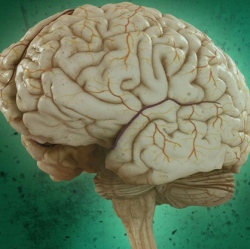
Scientists have long understood that different areas of the brain serve unique purposes. Recently have they realized that the organization isn’t static. Rather than having defined routes of communication, the level of coordination between different parts of the brain seems to change.
Now, by analyzing the brains of a large number of people at rest or carrying out complex tasks, researchers at Stanford University have learned that the integration between those brain regions also fluctuates. When the brain is more integrated people do better on complex tasks. The research was published in Neuron.
"The brain is stunning in its complexity and I feel like, in a way, we’ve been able to describe some of its beauty in this story," said study lead author Mac Shine, a postdoctoral researcher in the lab of Russell Poldrack, a professor of psychology "We’ve been able to say, ‘Here’s this underlying structure that you would never have guessed was there, that might help us explain the mystery of why the brain is organized in the way that it is.’"
In a three-part project, the researchers used open source data from the Human Connectome Project to examine how separate areas of the brain coordinate their activity over time, both while people are at rest and while they are attempting a challenging mental task. They then tested a potential neurobiological mechanism to explain these findings.
For the resting state condition, the researchers used a novel analysis technique to examine functional magnetic resonance imaging (fMRI) data – which shows in real time which areas of the brain are active – of people who weren’t doing any particular task.
The analysis estimates the amount of blood flow in pairs of brain regions and then uses the mathematics of graph theory to summarize the way that the whole network of the brain is organized. They found that even without any intentional stimulation, the brain network fluctuates between periods of higher and lower coordinated blood flow in the different areas of the brain.
To determine whether these fluctuations were relevant for the function of the brain, the researchers used fMRI data from people who had successfully performed a challenging memory test.
The researchers found that the brains of participants were more integrated while working on this complicated task than they were during quiet rest. Scientists have previously shown that the brain is inherently dynamic but further statistical analysis in this study revealed that the brain was most interconnected in people who performed the test fastest and with the greatest accuracy.
"My background is in cognitive psychology and cognitive neuroscience, and stories about how the brain works that don’t relate back to behavior don’t really do much for me," said co-author Poldrack. "But this research shows these really clear relationships between how the brain is functioning at a network level and how the person’s actually performing on these psychological tasks."
As a final step in their study, the researchers measured pupil size to try and tease out how the brain coordinates this change in connectivity. Pupil size is an indirect measure of the activity of a small region in the brainstem called the locus coeruleus that is thought to amplify or mute signals across the entire brain. Up to a certain point, increases in pupil size likely indicate greater amplification of strong signals and greater muting of weak signals across the brain.
The researchers found that pupil size roughly tracked with changes in brain connectivity during rest, in that larger pupils were associated with greater connectedness. This suggests that the noradrenaline coming from the locus coeruleus might be what drives the brain to become more integrated during highly complicated cognitive tasks, allowing a person to perform well on that task.
The researchers plan to further investigate the connection between neural gain and integration in the brain. They also want to figure out how universal these findings are to other behaviors, such as attention and memory. This research may also eventually help us better understand cognitive disorders, such as Alzheimer’s disease or Parkinson’s disease, but Shine stressed that this was a curiosity-driven investigation, fueled by the passion to simply know more about the brain.
"I think we were really lucky here, in that we had an exploratory question that bore fruit," said Shine. "Now, we’re in a position where we can ask new questions that will hopefully help us to make progress in understanding the brain."
